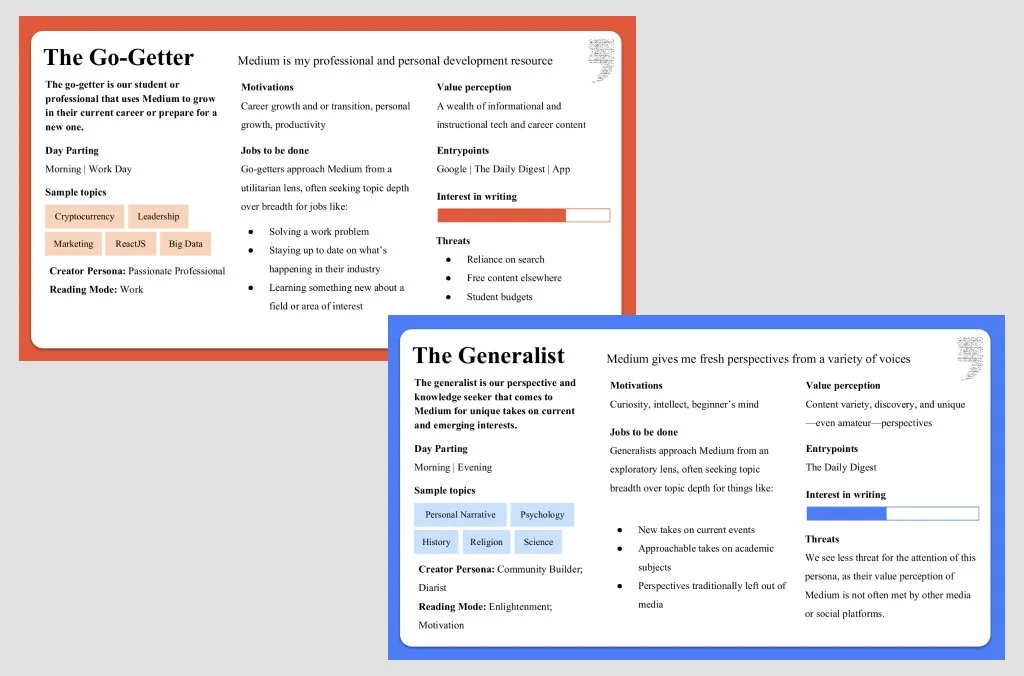Medium Reader Discovery
2021
Medium put a lot of emphasis on writer acquisition throughout 2020 and 2021 but hadn’t recently taken the time to deeply understand its readers. This understanding felt increasingly important given the consistent rise in popularity of Substack and other direct-to-creator publishing models and the resulting shift in how people read online.
My direct report and I spent a month in Q3 of 2021 surveying, interviewing, and otherwise researching our readers in order to better understand their behaviors, motivations, and needs.
Methods
Stakeholder Interviews
Surveys
Diary Study
User Interviews
Card Sort
Primary Research Questions
Who are Medium’s readers?
How does Medium fit into their daily habits?
What are their primary behaviors on the platform (e.g. clapping, highlighting, etc.)?
What does a successful, habituated reader look like?
Learnings
We presented our personas, insights, and recommendations first to the CEO and VP of product, then at our company all-hands.
This research leveled up two primary personas: The go-getter—our student or professional that uses Medium to grow or stay relevant in their current career or prepare for a new one—and the generalist—our perspective and knowledge seeker. While the former comes to Medium from a utilitarian lens and goes deep on a given topic (e.g. data science, cryptocurrency), the latter approaches the platform exploratorily; seeking topic breadth and new perspectives.
Other key takeaways:
The Daily Digest (Medium’s daily newsletter) is the biggest trigger for navigating consistently to Medium. The majority of readers consider this the most trusted Medium surface and only navigate to Medium via the Digest. This means they only navigate to Medium once each day upon receipt.
Medium’s topic spaces are a major value proposition and a major differentiator from our competitors—this is especially true for the go-getter persona.
Network activity (e.g. clapping, commenting, highlighting) is low among power users, but this does not equate to dissatisfaction—readers simply do not perceive Medium as a place for social network activity.
Recommendations
We presented our recommendations as hypotheses, including:
If we package content more thoughtfully then readers will visit more times in one day
If we direct readers to surfaces besides the Digest then they will become more engaged with the network
If we give users more control over the content they see then they will be less likely to churn
If we create more intimate spaces (e.g. subscriber-only threads) then we will increase community on the platform
Product Outcomes
This research informed the following work:
Recommendations-driven modules on the home and story pages to increase discovery and interaction with the network (pictured below).
Topic-based newsletters recapture the reader’s attention in the afternoon/evening—post-Digest consumption.
Topic-based onboarding so that readers can choose what topics they want to see upon signup.
Better placement of Medium’s “see less like this” and “refine recommendations” buttons so that readers can fine-tune their recommendations.


